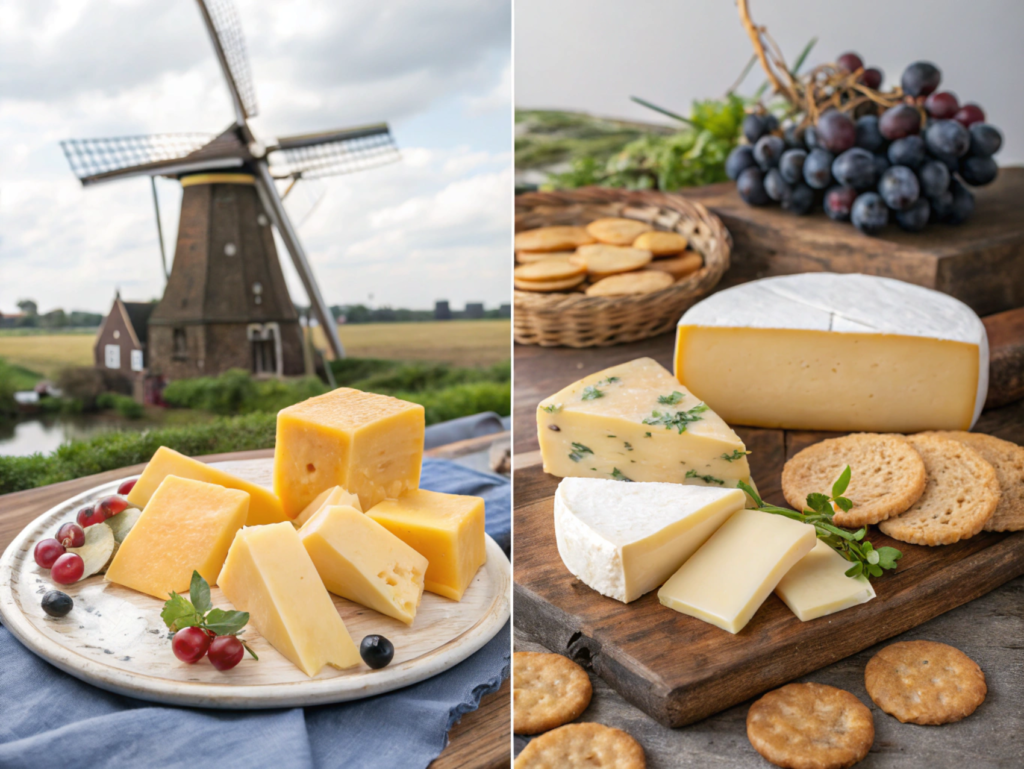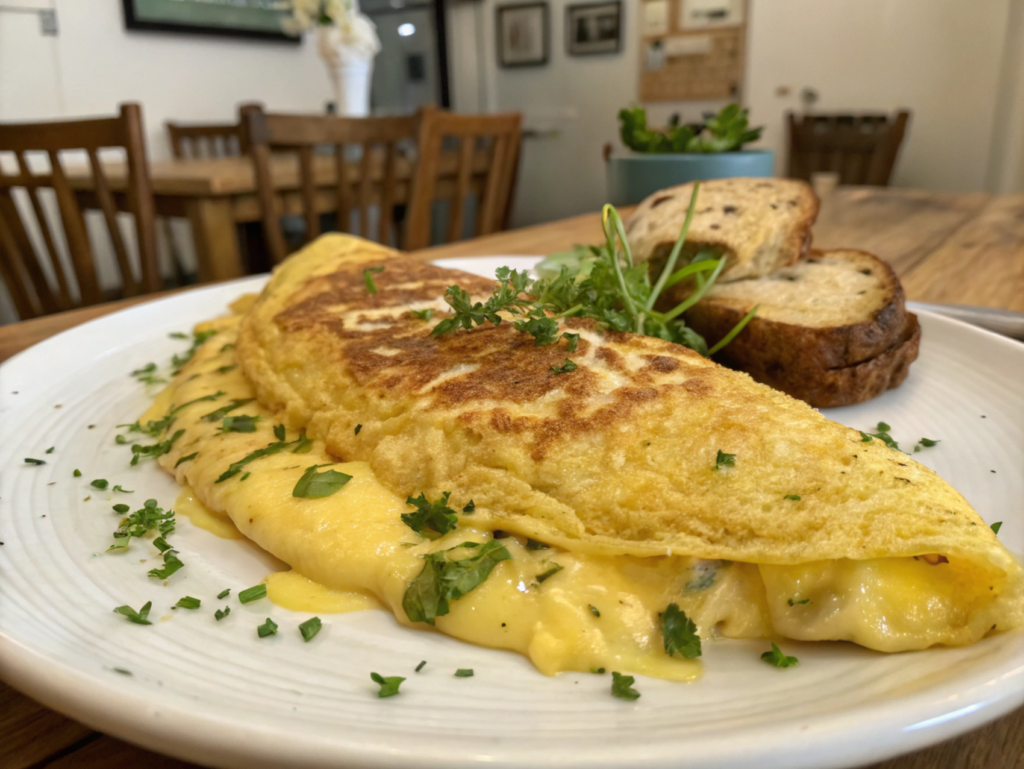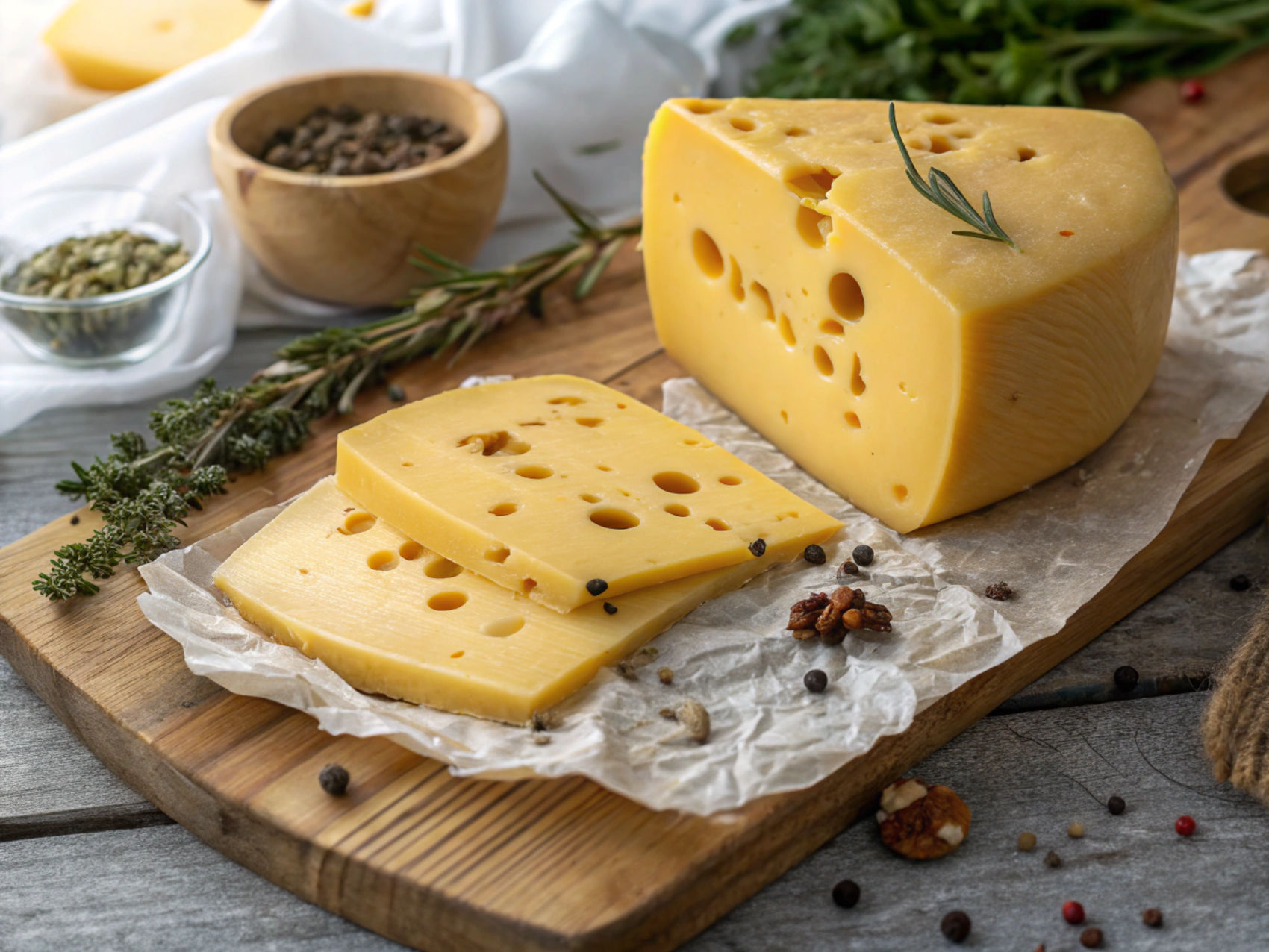I still remember my first morning in Amsterdam — the air was cool and carried a faint scent of tulips and coffee. A small market stall displayed rows of wax-covered cheese wheels glistening like golden suns. That was my introduction to Dutch cheese, and I’ve been fascinated ever since.
Cheese, after all, tells the story of its land — and nowhere is that more true than in the Netherlands.
🇳🇱 A Heritage of Flavor
The Dutch have been crafting cheese since the Middle Ages, turning their green pastures and rich milk into treasures like Gouda and Edam. These weren’t just local favorites — they became currencies of flavor, traded across Europe’s canals and markets.
Even today, the bustling cheese markets of Alkmaar and Gouda feel like living history. Wheels are weighed, tasted, and sold just as they were centuries ago — a celebration of tradition that still sustains local pride and global curiosity.
Around the World in Cheese
While France has its creamy Brie and bold Roquefort, and Italy gives us Parmesan and Mozzarella, the Netherlands offers something different — balance. Dutch cheeses are mild yet complex, smooth yet firm. They’re the kind you can slice thinly for a sandwich, melt over pasta, or enjoy on their own.
If you love exploring world cuisines, you might also enjoy my Moroccan couscous recipe or this Greek-inspired salad — dishes where simple ingredients meet cultural storytelling.

What Makes Dutch Cheese Unique
Flavor Profiles: Buttery, nutty, and slightly sweet — approachable and crowd-pleasing.
Texture: Firm and smooth; perfect for melting or slicing.
Colorful Wax Coatings: Edam’s red shell and Gouda’s yellow rind aren’t just pretty — they protect the cheese during aging and travel.
Behind these traits are centuries of careful technique — high-quality milk, slow cultures, and a respect for patience.
The Art of Aging
The aging process is crucial to the flavor and texture of Dutch cheese. Here are its In the Netherlands, cheese isn’t just made — it’s matured.
- Jong (Young): Soft and creamy, delicate in flavor.
- Belegen (Aged): A touch sharper and firmer — my favorite for sandwiches.
- Oud (Old): Deep, crumbly, with a whisper of caramel.
Aging is what gives Dutch cheese its soul — time transforms simplicity into depth.
Cultural Symbol & Culinary Muse
Beyond the plate, Dutch cheese is woven into daily life — from farm festivals to breakfast tables. It’s not just food; it’s identity.
You’ll find it folded into omelets, tucked into sandwiches like my Chicken Katsu Sando, or melted over vegetables for a cozy dinner.
Try This at Home
Dutch Cheese Omelette with Herbs
A quick, comforting dish: whisk fresh eggs, fold in grated Gouda, sprinkle thyme, and cook until golden. Serve it with crusty bread and a side of green bean casserole for a fusion of European flavor and American comfort.

For detailed instructions on these recipes and more, visit Tasty Simply Recipes. Explore it to find innovative ways to enjoy Dutch cheese in your meals.
FAQ – All About Dutch Cheese
What are the Dutch cheeses?
Gouda, Edam, and Leerdammer are most famous — each with its own character and texture.
Are Gouda and Edam the same?
No, Gouda and Edam are different. Gouda is richer and creamier, while Edam is firmer and often has a milder flavor. Both are iconic Dutch cheeses with their own unique characteristics.
What kind of cheese is in Amsterdam?
In Amsterdam, you’ll often find a variety of Dutch cheeses, including Gouda and Edam. Local shops also feature aged cheeses and specialty varieties, offering a true taste of Dutch culture.
What is the Dutch cheese with holes in it?
The Dutch cheese with holes is Leerdammer, often compared to Swiss Emmental. It has a nutty flavor and a semi-hard texture, making it a popular choice.
In the End
Every slice of Dutch cheese feels like a small postcard from the Netherlands — carrying centuries of craft, trade, and quiet pride. Whether melted into breakfast or paired with wine at sunset, it reminds me that simple ingredients can travel as far as our stories do.
If you love exploring flavors through culture, visit more of my Global Dinner Recipes — from matcha journeys in Japan to Mediterranean comfort food.

